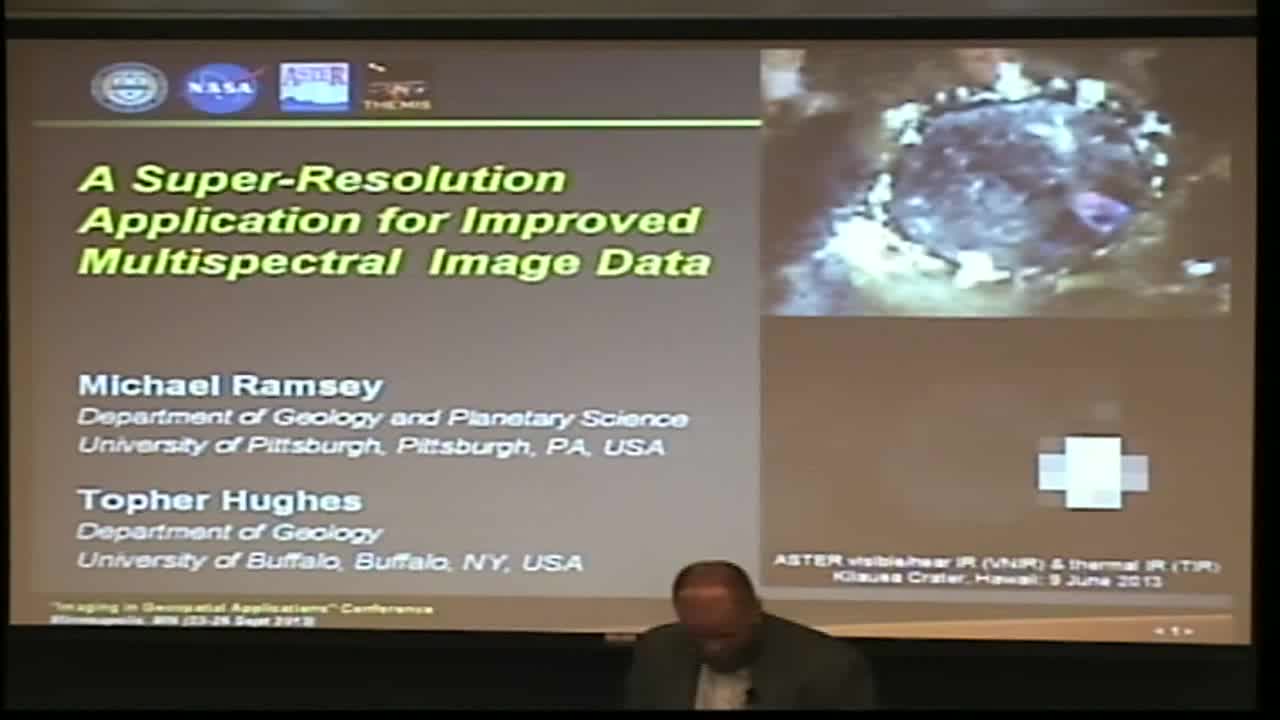A Super-Resolution Application for Improved Multispectral Thermal Infrared Image Data
Presenter
September 26, 2013
Keywords:
- Thermal
MSC:
- 74F05
Abstract
Thermal infrared (TIR) imaging is most commonly used to determine scene temperatures for industrial, military, medical, and natural hazard applications. In the past several decades, the advent of relatively inexpensive handheld thermal cameras and the launch of multispectral TIR sensors have resulted in an abundance of data for use in numerous planetary science, geology, and volcanology problems. Multispectral TIR data not only provide better temperature accuracy but also the ability to extract emissivity, a fundamental property used to identify the composition of natural and man-made materials and gases. Emissivity is sensitive to material coatings, particle size, temperature as well as other factors making its analysis more complex but also providing the ability to measure a suite of surface properties. However, TIR images typically have lower spatial and/or spectral resolution than visible/near infrared camera or satellite data, which makes them harder to interpret. Improving spatial resolution by way of spectral diversity in a scene is therefore an important analysis tool. Super-resolution is such a process that fuses the original TIR data with an additional source at the desired (improved) resolution. We present a technique for super-resolution imaging that has been tested successfully using multispectral and multiresolution data from the Earth-orbiting Advanced Spaceborne Thermal Emission and Reflection Radiometer (ASTER) instrument (resolved from 90 to 15 m/pixel) and the Mars-orbiting Thermal Emission Imaging System (THEMIS) instrument (resolved from 100 to 36 m/pixel). This approach not only enhances the spatial resolution, but also results in radiometrically-accurate TIR data that can then be interrogated for spectral diversity. We hope to use the super-resolution approach to improve the data from a new multispectral adaptation of our ground-based TIR camera in the near future.
